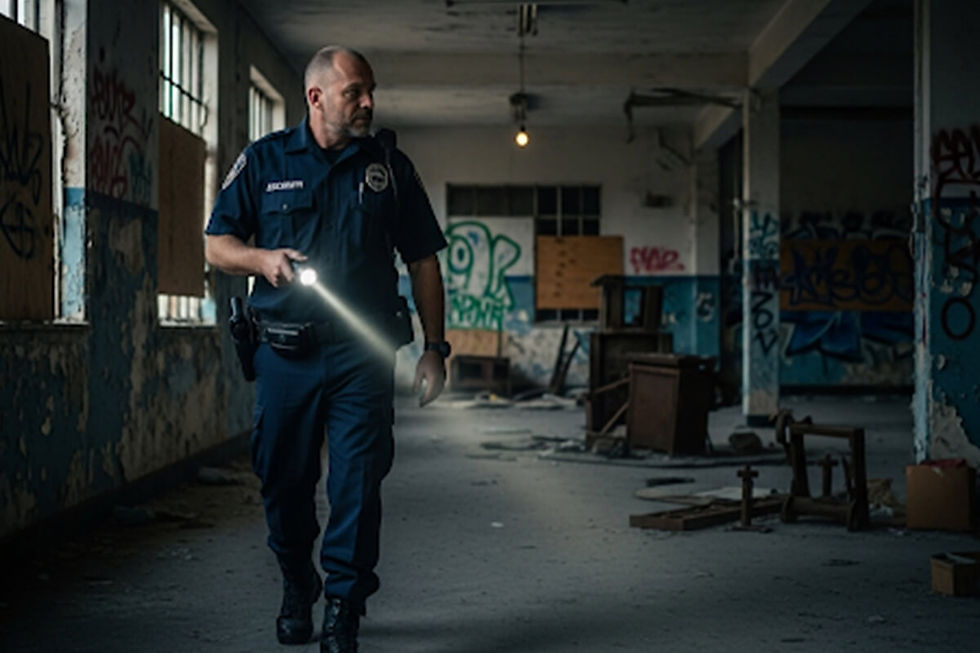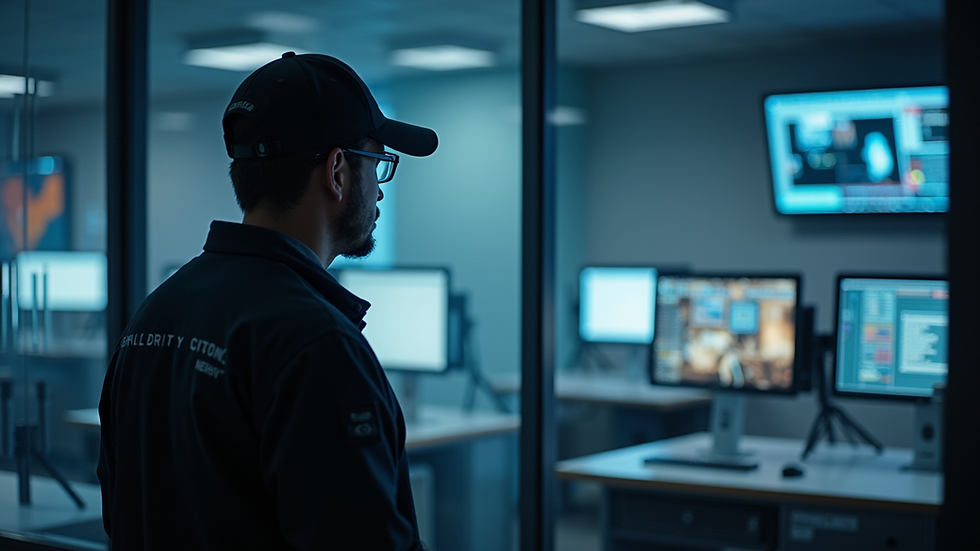Vacant Property Management 101: Essential Security Measures for Vacant Buildings
- admin
- 4 days ago
- 5 min read
A vacant property presents significant challenges for its owner. These empty spaces are not just idle assets; they are potential liabilities. They can attract unwanted attention, leading to various issues. Ensuring the security of these buildings is a primary concern. Owners must prevent theft, vandalism, and illegal occupation. They must also mitigate potential damage and legal exposure.
Managing a vacant property requires a proactive stance. Ignoring these risks can lead to financial losses and legal trouble. An effective security strategy protects the building's integrity. It preserves the property's value. Here are a few key steps to securing a vacant building. It is a resource for property owners and managers.
Why Vacant Properties Are Vulnerable
Absence of Occupants and Surveillance
The most significant risk is the absence of people. No one is there to notice suspicious activity. There is no one to deter potential intruders. The lack of a routine presence invites criminal behaviour. This absence creates a sense of impunity for those with malicious intent.
Attraction for Vandalism and Graffiti
Empty buildings are frequently defaced. Vandals see them as blank canvases. They cause significant damage and reduce the property's value. The cost of cleaning and repairing this damage can be substantial. This is a common problem with unsecured empty property management.
Temptation for Theft of Materials
Vacant properties often contain valuable materials. This includes copper wiring, plumbing, and appliances. Thieves target these materials for scrap value. The theft causes extensive damage to the building's infrastructure. These losses are often costly to repair.
Risk of Unauthorized Occupancy (Squatting)
People may illegally move into an empty building. Squatters can be difficult to remove. The legal process for eviction is often lengthy and expensive. Their presence can also lead to further damage to the property. This is a major concern for vacant commercial property security.
Fire and Other Hazards
Unsecured vacant buildings face a higher risk of fire. Arsonists may target them. The lack of regular maintenance can also lead to electrical or structural issues. These problems can create fire hazards. This poses a risk not only to the property but to surrounding buildings as well. The Canadian National Fire Information Database reports that vacant properties are disproportionately affected by arson, highlighting a critical risk.
Neglect and Deterioration
Without proper maintenance, a building's condition deteriorates rapidly. Leaks, mould, and structural problems can go unnoticed. These issues become more serious over time. They lead to expensive repairs. This is a crucial aspect of securing vacant buildings.
Physical Security Measures

Secure All Entry Points
All doors and windows must be locked and reinforced. Use high-security locks. Install steel security doors and window coverings where needed. Boarding up windows is a common practice. This prevents forced entry and vandalism. It is a critical step in securing unoccupied property.
Install Fencing and Gates
A sturdy perimeter fence creates a physical barrier. It clearly defines the property's boundaries. A locked gate restricts vehicle access. Fences with a robust construction are a significant deterrent. They make it harder for intruders to enter unnoticed.
Reinforce the Structure
Ensure the building's exterior is sound. Repair any broken windows or damaged doors immediately. Seal any openings that could provide access. This includes basement windows, vents, and roof hatches. Maintaining the building's integrity is vital. This is part of a complete vacant house security strategy.
Exterior Lighting
Proper lighting is an effective deterrent. Install motion-activated lights around the perimeter. This illuminates dark areas where intruders might hide. Good lighting makes it difficult for someone to approach the building undetected. It also aids in surveillance.
Regular Property Inspections
A schedule for regular, documented inspections is essential. This involves a physical check of the property's exterior and interior. Look for signs of forced entry or damage. This is a key part of vacant land security. The frequency of these checks should be based on the property's location and risk level.
Technological Security Measures
Install an Alarm System
An alarm system is a powerful deterrent. It should be monitored by a professional service. The system should include door and window sensors. Motion detectors are also important. The alarm sound itself can scare away intruders. A professional monitoring service ensures a quick response.
Surveillance Cameras
CCTV cameras provide visual coverage. They can be monitored remotely. The presence of cameras alone can deter criminal activity. Footage can also be used as evidence. Modern systems allow for remote viewing and alerts via a smartphone. This is a key element of a vacant property monitoring system.
Smart Sensors
Smart sensors can detect more than just motion. They can monitor for water leaks, smoke, or sudden temperature changes. These devices can alert the owner to potential issues before they become major problems. They are a proactive tool for property preservation. This is an advanced aspect of property security services.
Remote Access Control
If contractors or service personnel need to enter the building, a remote access system is useful. This avoids the need for physical keys. It allows owners to grant and revoke access remotely. It also logs who entered and when. This provides an audit trail and better control.
Integrated Security Solutions
Combining various technologies is highly effective. An integrated system can link cameras, alarms, and sensors. It provides a comprehensive view of the property's security status. A single platform can manage all security functions. This provides a robust solution for vacant building security solutions.
Regular Monitoring and Maintenance

Weekly or Bi-weekly Inspections
A consistent schedule of property visits is vital. These inspections should check for signs of a break-in. They should also look for weather-related damage. Inspections should cover both the interior and exterior of the building. This helps to identify issues early.
Maintain Exterior Appearance
Keeping the grounds neat and tidy is important. Cut the grass. Clear away any litter or debris. A well-maintained exterior suggests the property is still in use. This can discourage trespassers. It avoids the look of a neglected and abandoned building.
Utilities Management
Decide which utilities to keep on. In most cases, it is wise to turn off the water to prevent leaks. However, a minimal level of electricity may be necessary for security systems. A professional can advise on the best approach. Turning off non-essential utilities can also reduce costs.
Board Up All Entryways
If the property is to be vacant for an extended period, boarding up all windows and doors is a good idea. This is a clear signal that the building is secured. It makes forced entry much more difficult. This is a standard practice in managing vacant property risk.
Professional Security Patrols
Consider hiring a professional security patrol service. Guards can perform random checks of the property. Their presence is a strong deterrent. They can respond to alarms and investigate suspicious activity. This offers an expert layer of protection.
The risks associated with an unsecured building are too great to ignore. Financial losses, legal liabilities, and property devaluation are all real possibilities. Investing in a robust security strategy is an investment in the property's future. It protects the asset and provides peace of mind. For professional assistance in securing your vacant property, contact Security Guard Group Canada at (226) 667-5048.
_PNG.png)



Comments